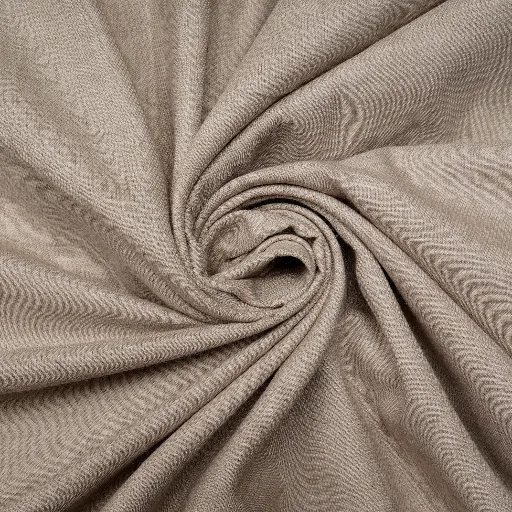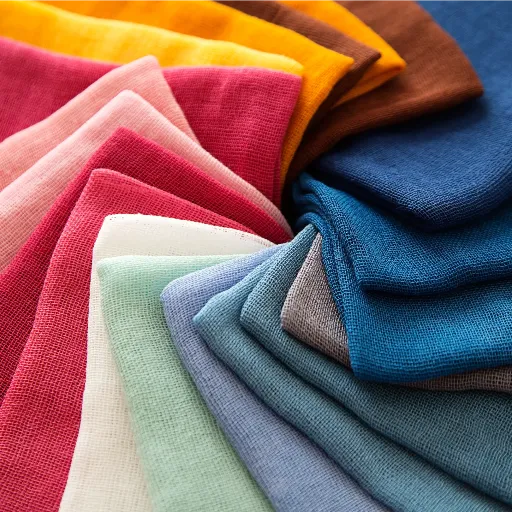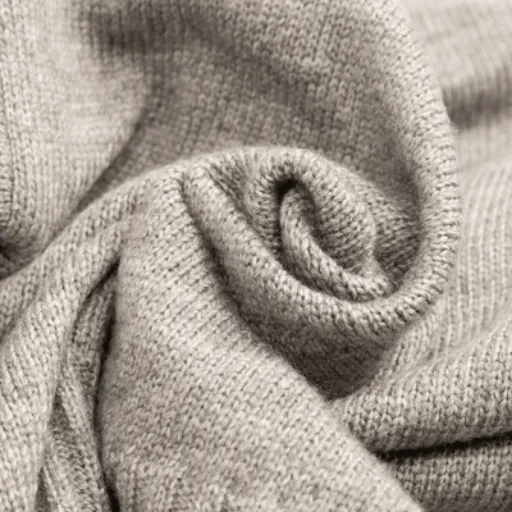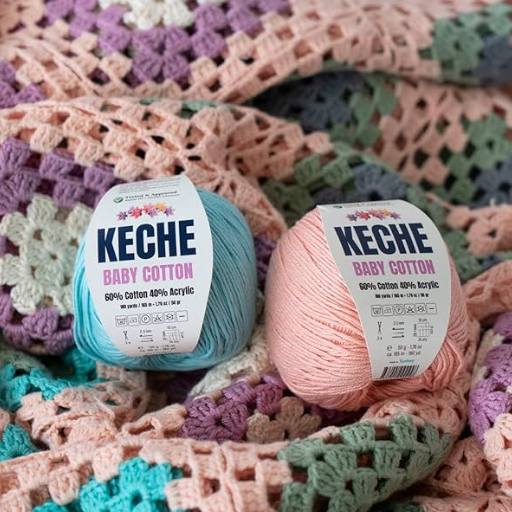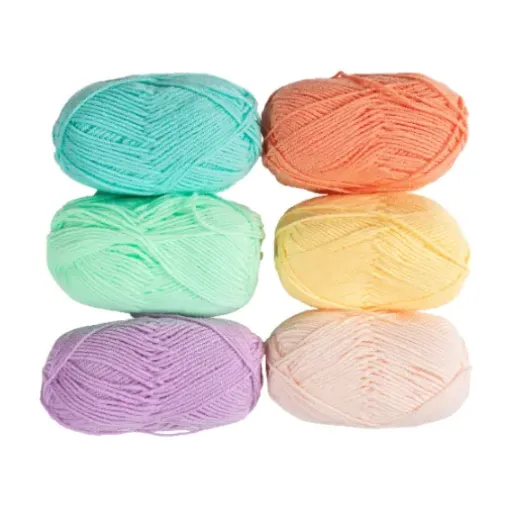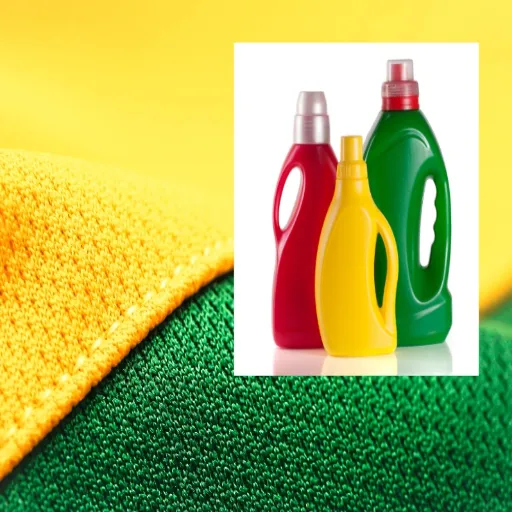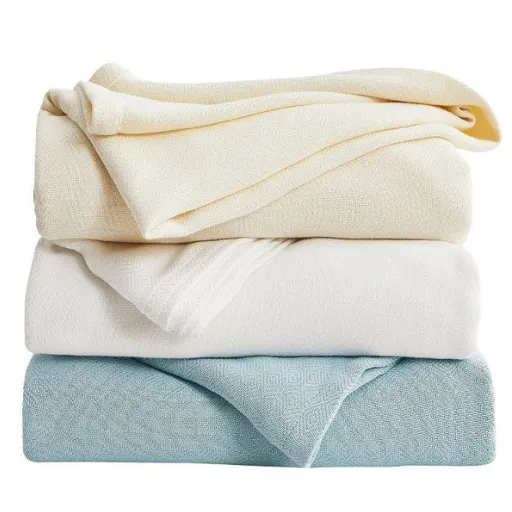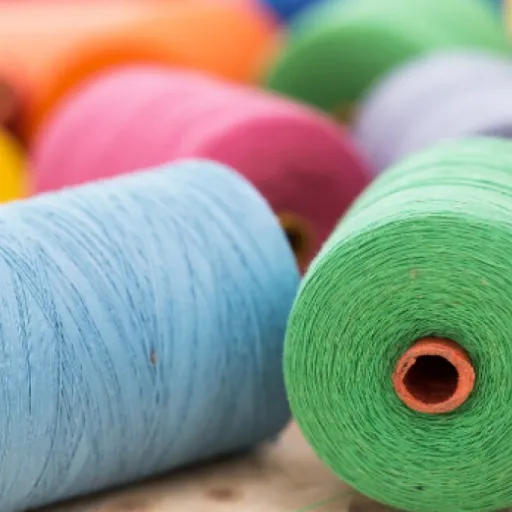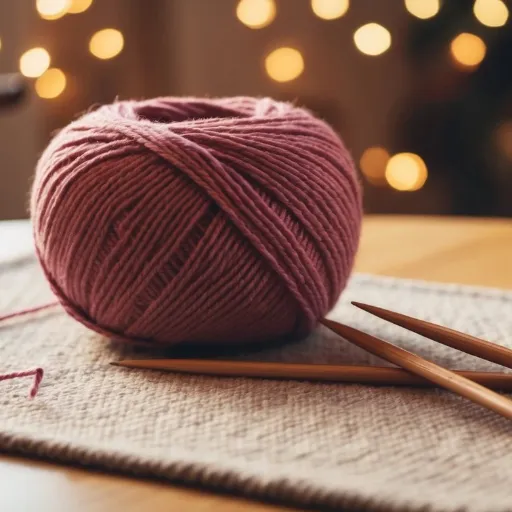Every crocheting and knitting aficionado appreciates how the kind of yarn chosen has a huge impact on a project. A well tailored lace shawl, cozy sweater and even a tote bag, all need a specific blend of cotton and polyester yarn. In this article, the purpose of exploration will be the strengths of cotton polyester yarn such as practicality, durability, versatility, and how its best suited for all types of applications. With the right knowledge, you will be able to achieve remarkable crafting results every single time.
What is Cotton Polyester Yarn?
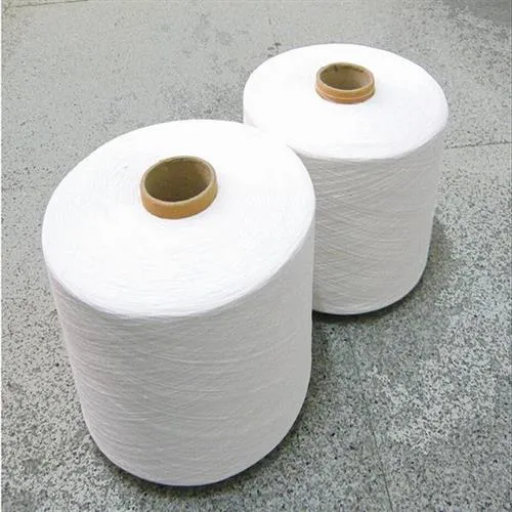
Cotton polyester yarn consists of both synthetic and polyester fibers as well as natural cotton fibers. Considered to be blended textiles, they are known to provide an absolute balance of durability, breathability, softness and even soft edges. Comfort and absorbency are provided by cotton while polyester contributes by enhancing tensile strength, flexibility, resistance and even the ability to withstand wrinkling and shrinking. The most commonly used textiles for clothing, home furnishings and even crafting projects are these blended textiles because of their high reliability as well as easy maintenance.
Understanding the Cotton and Polyester Blend
The cotton-polyester blend typically consists of varying ratios of both fibers, common mixtures being 50% cotton and 50% polyester, or 65% polyester and 35% cotton. These ratios are engineered to meet particular specifications. Cotton excels in offering breathability, moisture wicking, and provides a soft texture to skin as it is a natural cellulose fiber. Polyester, on the other hand, is a synthetic polymer occuring as a fiber which has good tensile strength, resistance to abrasion, and retains shape under stress.
Use of cotton and polyester individually is less effective than using the two in combination. The blend demonstrates enhanced performance attributes compared to either fiber used individually. Inclusion of cotton improves comfort level and thermal insulation making the blend highly suitable for diverse applications across industries. Along with that polyesters also heightens the material’s resistance to shrinkage, fading, and stretching which is important for durability with use over time. A combination of both fibers grants ease of maintenance, high versatility, and long term usability. Such factors make it ideal for a modern day consumer.
Why Choose Cotton Yarn for Knitting and Crochet?
The predecessor of cotton yarn can be traced back to knitting and crochet lovers. The natural element of cotton yarn makes it breathable, durable, and quite light. This is highly beneficial for making garments, children’s clothing, and other household textiles. Also, cotton yarn is inexpensive and its absorption ability makes it suitable for warm weather clothes or clothes meant for regular use such as dish clothes and summer tops.
Moreover, the cotton yarn’s texture smoothness assists in distinct stitch definition, displaying clean and detailed patterns on the finished product. This feature assists lace constructors, color workers, or detailed designers. With the progress made in dyeing techniques cotton yarn can now be found in a variety of bright colours and even gradients, thus there is no limit to the imagination for such intricate designs. The durability of cotton yarn ensures that projects made out of it will be able to endure multiple washes and wear without significant damage.
Benefits of Using a Cotton Blend Yarn
- Enhanced Durability
Synthetic fibers like polyester or acrylic are not only elastic but are also resilient. This means they are capable of combining with cotton to make cotton blend yarns. The strength of cotton becomes its natural strength when it is combined with synthetic yarns. According to studies, blending cotton with synthetic materials greatly increases tensile strength. For long term projects, like clothes, bags and home textiles, blended yarns work best. For instance, projects made with cotton-polyester blend yarns are estimated to be 30% more durable than those made with pure cotton yarns.
- Improved Elasticity
Each yarn has its pros and cons and varying forms of application. Pure cotton yarns have limited stretch, leading to stiffness and difficulty in garment shape maintenance. This Pays off in the long run as cotton blends help with Spandex or acrylic blends that introduce flexibility, ensuring better retention of shape with time.
- Softness and Comfort
Cotton on its own is known for its natural softness. When blended with silk or bamboo, the comfort factor is enhanced. Smooth to touch and hence provides ultimate comfort; these blends are ideal for directly skin contact projects like summer garments and baby blankets.
- Moisture Management
As one of the natural fibers, cotton absorbs moisture, sweating autonomously like a sponge which is paired with a synthetic like polyester which dries rapidly by repelling water. With these two fibers blended to form a cotton blend yarn, a balanced blend effortlessly crafted textiles such as activewear or warm-weather clothes that are breathable yet quick-drying, crucial for high performance.
Considerable cotton, blended yarns are harnessed from synthetic or specialized fibers for special industrial and crafting functions. These yarns work for functional requirements because they provide a well-rounded alternative.
How to Select the Right Yarn for Your Project?
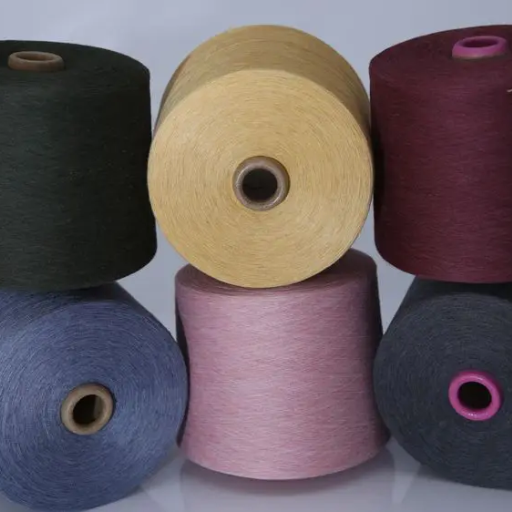
Take into account these additional details for selecting the right yarn:
- Intended Use: Evaluate what the final structure will be used for. For wearable items, soft breathable yarns like cotton blends will be more suitable. For decorative home items, texture and durability may take precedence.
- Fiber Composition: Focus on the fiber type specific to your project’s needs. For example, natural fibers like wool provide warmth. While acrylic or blends can be low maintenance and versatile.
- Weight and Thickness: Adjust gauge to your pattern and choose DK, worsted, or bulky. Correct weight used guarantees the right structure and accurate size.
- Care Instructions: Depending on whether the completed work will be worn or displayed, a plan should be set such as if the yarn will be machine-washed or is hand-wash only.
- Texture and Appearance: Pick a texture that goes with your design, for instance smooth for intricate detailing, or for a bit of visual twist, a textured design.
With these considerations, you can make sure that the functionality and aesthetics of your project are well balanced with the yarn selection. To achieve ideal results, always follow the distinct aspects of your pattern.
Factors to Consider When Choosing Yarn
When it comes to choosing yarn the most important factor to consider is it’s weight. Weight dictates the twilliness structure of the fiber. The range of yarn weight is classified into lace, which is the thinnest and goes up to jumbo which is the thickest. This also affects the gauge, which is the number of stitches and rows in a certain inch. A good example would be fingering and sport weight yarns which allows for more detailed works. Heavy warm garments like slouchy sweaters and blankets use bulky and super bulky weight yarns. To achieve the desired fit and drape of the final product, proper matching of yarn weight with gauge is essential.
Equally important is yarn composition since it confirms the feel, rigidity, springiness, and maintenance of the yarn. Natural fibers of wool, cotton and silk provide breathability and comfort, but they have specific maintenance routines. Greater durability and easier maintenance makes acrylic and other synthetic fibers more suitable, especially for children’s clothes or high use items. Blended fibers are a combination of different materials to provide multiple options for balance softness, slacktivity, toughness, and ease of care. Always assess the intended function and longevity of your project with fiber composition.
Understanding Yarn Weight and Its Importance
Yarn weight is understanding the diameter of the thread. it determines how a project looks, it’s strength, and how functional it would be. It has eight categorized standards, ranging from “0” (Lace) to “7” (Jumbo). Each with their own specific use and crafting technique. Lace and Fingering are thin yarns suitable for light and delicate garments, as well as fine laced work. While Bulky or Jumper are thicker yarns designed for warm and sturdy garments like blankets and winter gear.
Appropriately picking the yarn weight affects the gauge which is stitches and rows per inch for measuring the size and fit of a particular piece. For example, using the wrong yarn weight with a specified needle or hook size will create a poorly structured project. Moreover, the drape and stretch of the material also depends on yarn weight. For instance, lighter weights will be more fluid while heavier weights will be more stable. Knowing these differences help maintain consistency between the quality and performance of the product and the pattern specifications.
What are the Best Projects for Cotton Polyester Yarn?
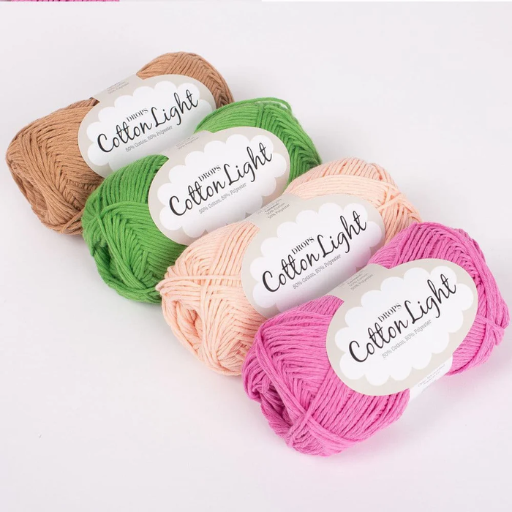
The cotton polyester yarn is perfect for different projects in various fields because it is both soft and durable. This text sheds light on polyester yarn’s use in light clothes and summer dresses as it is breathable and doesn’t easily wrinkle. It also works for decorative pieces for the home like pillowcases, dishcloths, and blankets, offering comfort, strength, and softness. This yarn is excellent in sewing reusable accessories like tote or market bags as they are subject to wear and tear.
Creating Colorful Accessories with Cotton Yarn
When using cotton yarn to make colorful accessories, creating the right color palette is key to an appealing and cohesive design. New trends in interior and fashion design seem to prefer earthy and pastel colors alongside bold contrasts. For example, warm terracotta paired with soft neutrals is elegant and modern, while sharp turquoise and mustard yellow generate bold, striking designs.
The effects of cotton dye are especially vivid and colorful on cotton yarn since its ability to absorb dyes is even; thus, the yarn is noticeably vibrant in color. Choosing cotton yarn makes the fade resistant accessories retain their appeal even after considerable wearing over periods of time. The functionality and modern aesthetics can be achieved by incorporating creatively design tote bags, scarves, and decorative pillowcases with a carefully chosen color combination.
Durable Blankets and Home Decor with Blended Yarn
Blended yarns are preferred for crafting blankets and other home items because they are easy to care for and long lasting. They are made from natural yarn materials like cotton and wool chairs and combined with synthetic polyethylene and acrylic for greater wear and tear. The dual composition also enhances these items over periods of severe stress. Blended yarn such as cotton satin clips offer crafters a perfect alternative due to it possessing a muddle definition between durability, ease of care, and multifunctionality. This blend becoming commonplace can also be traced to newer advancements in yarn technology. It can now be blended to help insulate heat while also wicking away moisture, making it effective for diverse climates year-round. Blended yarns are being especially designed to withstand stains while maintaining vibrant colors and easy maintenance for fading. Blended yarn is an important resource to withstand extreme wear while looking stylish and smart.
How to Care for Your Cotton Polyester Yarn Projects?
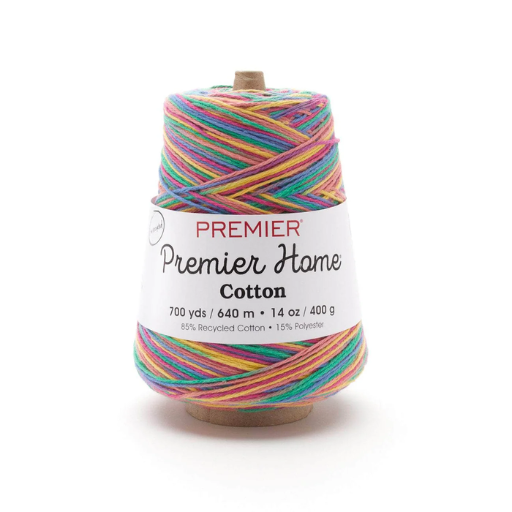
Following best practices for hygiene helps in preserving the longevity and the looks of the cotton-polyester projects. Here are what you should do:
1. Washing: Set water to a warm or cold temperature, defend against strong cycle settings, make use of soft chemicals hand washing is also good if the work is sensitive.
2. Drying: Helps prevent accidents with shape alteration and form retention if air-dried best. If driers are going to be used, the lowest possible heating one should be selected. When drying, do not over heat polishing.
3. Ironing: Only do so with a pressing textile not hotter than half the hottest other ironing temperatures so that none begs condensation.
4. Storage: Avoid tight packing so as to better keep structure. A cool, dry area away from light optimally aids during stashing.
With due effort and these easy to do guidelines, the yarn projects ensure best function further down the line.
Washing and Maintaining Your Yarn Creations
Correct cleaning procedures for washing cotton polyester blends is vital to upholding a piece’s structure and ensuring its lifespan. As a starting point, always refer to the specific care instructions of each yarn used in your project because even blended fibers come with different rules. For the majority of cotton polyester yarn, a gentle wash cycle done with cold or lukewarm water is preferred. Using high temperatures can greatly weaken or shrink fibers. Mild detergents work best as they provide protective cleaning of the yarn during wash cycles, assisting in keeping the yarn safe during the process.
Washing intricate projects such as garments is best done by hand. Towel or wring waving fabrics should not be done to avoid stretching or wringing the delicate. For machine washing, put delicates in a mesh washing bag to prevent fabric snagging, abrasions, or other forms of destruction. Your yarn projects should always be washed separately as machine wash can be harmful. They can easily get tangled, rubbed, or clawed by heavy textured fabrics like denim and thus causing irreversible destruction.
Ensuring Colorfastness in Your Projects
The test that is colorfastness a method of testing color bleeding is important when it comes to your handmade projects. It is also important to make sure that the fabric or yarn that you are using, does not bleed or fade. You can perform a test by wetting a white cloth and rubbing it against the fabric. If there is color on the cloth, then some pre-treatment is needed. The dye can be set with vinegar or saltwater soaks for natural fibers. Remember that cold water is best when washing colored projects, as it helps with dye bleeding. Washing adds extra protection with a color safe detergent while preserving the fabrics hue. All stages of Project caretaking ensures set results.
What Makes Cotton Polyester Yarn a Favorite Among Crafters?
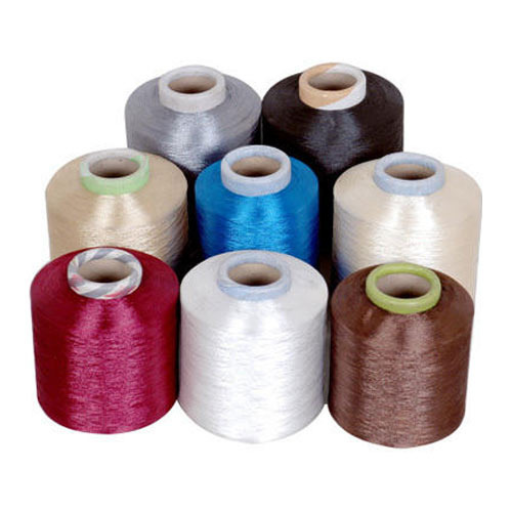
The cotton satin clip melts into clothing and home items easily a truly breathable and soft blend. It is further complemented by polyester which increases its strength as well as elasticity ensuring that items don’t lose their shape after washing and spinning. The combination also leads to lower maintenance after long periods of crafting which makes a great alternative for learners and professionals a like. It comes in varying shades which makes it useable in various forms of crafting and further adds to its appeal.
Comparing durability with other yarn types
|
Yarn Type |
Durability Level |
Resistance to Wear |
Maintenance Required |
Common Applications |
|---|---|---|---|---|
|
Cotton Yarn |
Moderate |
Low |
High |
Garments, lightweight projects |
|
Wool Yarn |
High |
High |
Moderate |
Sweaters, blankets, winter gear |
|
Acrylic Yarn |
High |
Moderate |
Low |
Decor, everyday wear |
|
Polyester Yarn |
Very High |
High |
Very Low |
Bags, rugs, heavy-duty items |
|
Bamboo Yarn |
Low to Moderate |
Low |
High |
Lightweight clothing, summer wear |
|
Nylon Yarn |
Very High |
Very High |
Low |
Socks, hosiery, sportswear |
|
Silk Yarn |
Moderate |
Low to Moderate |
High |
Luxury items, scarves |
|
Alpaca Yarn |
High |
Moderate |
Moderate |
Sweaters, shawls, soft garments |
Softness and Comfort in Finished Products
Synthetic fibers like nylon, differ from the former as they are tough and elastic, putting durability ahead of softness which makes them ideal for athletic clothing. It has been possible to manufacture yarns of mixed properties with the newly developed technologies in textiles and synthesizing with natural fibers for better comfort, softness and adaptability for different uses. Research shows that using most well suited yarn products improves consumers satisfaction in regard to texture and convenience for long-utilization.
Versatility of Yarn for Various Projects
Yarn serves other purposes besides making fabrics as it can be used in many different sectors. For instance, recently developed technical yarns have made it possible to use them in high-end areas such as aerospace and automotive industry, which need strong but light materials. Also in home decoration, yarns are used to make patterns on rugs and upholstery as well as used for wall hangings, taking advantage of the many different textures and colors yarns offer to match the interiors. Data shows the use of flame-retardant and moisture-wicking specialty yarns has increased in demand in safety gears and outdoor clothes. Thus, these examples show why yarn is very important with respect to creative designing and practical uses.
Reference Sources
-
Effect of Thread on Yarn Quality of Cotton/Polyester 80/20% Blend Yarn (2023): This study analyzed the impact of twist levels (850, 918, and 988 twists/meter) on the quality of cotton/polyester 80/20% blend yarn.
-
Beyond Cotton and Polyester: Emerging Feedstocks for Textile Fibers (2024): This review explored alternative feedstocks like soybean, wheat, and sugarcane residues for textile-grade fibers.
-
Polyester Cotton Yarn Market Trends (2024): The polyester cotton yarn market is projected to grow at a 5.5% CAGR over the next five years, driven by demand in manufacturing and construction.
Frequently Asked Questions (FAQs)
Q: What is the best brand of cotton polyester yarn for crochet projects?
A: One of the premier brands for cotton polyester yarn is Lion Brand Yarn, which offers a wide range of options suitable for various projects in knitting or crochet.
Q: Can I find washable cotton polyester yarn for my projects?
A: Yes, many yarn brands provide machine washable options, making them ideal for projects like cardigans or baby items that require easy care.
Q: What is the advantage of using a blend of recycled cotton in yarn?
A: A blend of recycled cotton is not only eco-friendly but also produces a super soft and fluffy texture, perfect for creating comfortable and stylish garments.
Q: Are there free patterns available for using cotton polyester yarn?
A: Yes, many yarn brands, including Lion Brand Yarn, offer free patterns that you can use with their cotton polyester yarn to inspire your next crochet or knitting project.
Q: What weight of cotton polyester yarn should I choose for my crochet project?
A: Worsted weight is a popular choice for many projects in knitting or crochet, as it provides excellent stitch definition and is easy to work with.
Q: How does polyester affect the feel of cotton yarn?
A: Polyester produces softer and more durable yarn, which enhances the overall look and feel of your finished projects, making them both comfortable and long-lasting.
Q: Can leftover cotton polyester yarn be used for other projects?
A: Absolutely! Leftover yarn can be creatively used in various small projects or combined to create unique designs, such as t-shirts or accessories.
Q: Is it possible to achieve colorfast projects in knitting using cotton polyester yarn?
A: Yes, many cotton polyester yarns are designed to be colorfast, ensuring that your projects maintain their vibrant colors after washing.
Q: What type of yarn is recommended for making soft baby garments?
A: A super soft cotton polyester yarn is recommended for baby garments, as it is gentle on sensitive skin and easy to care for, being both washable and dryable.
Q: How do I choose the right cotton polyester yarn for my knitting or crochet project?
A: Consider factors such as the weight of the yarn, the desired look and feel, and whether you prefer a blend of recycled cotton. Testing a few skeins from different brands can also help you find your favorite yarn.








